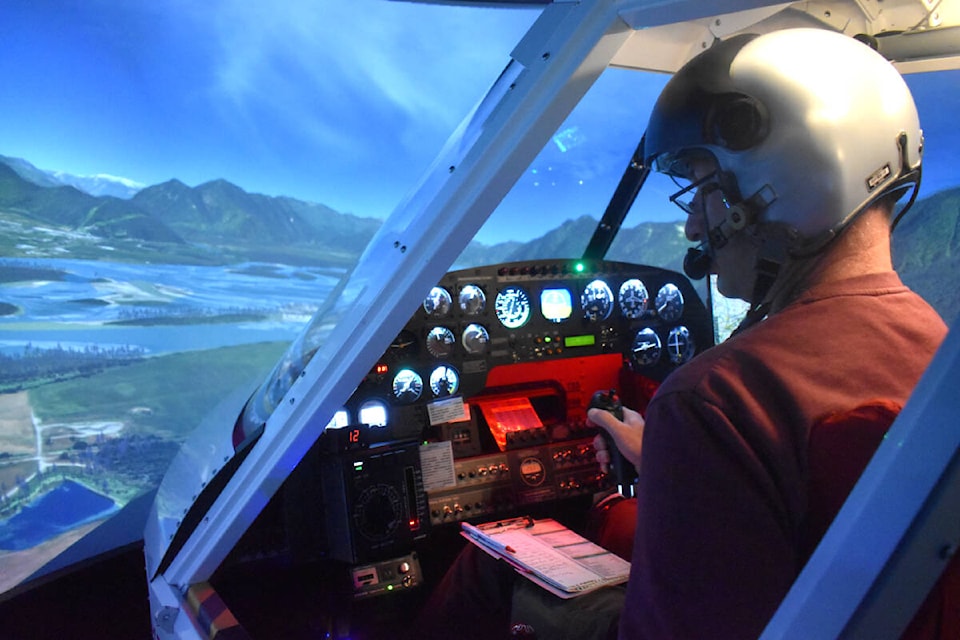Summer is just around the corner and for much of British Columbia that now means dealing with the looming threat of wildfires.
But for one Abbotsford company it is their time to shine.
Conair Aerial Firefighting, located on the Abbotsford International Airport grounds, is a global leader in the battle against wildfires and continues to grow.
The company boasts the third-largest fleet of any company in Canada, with 70 aircraft taking on challenging situations all across the planet.
They have been used for years in places like B.C., Alaska, Alberta, Australia, France and Washington State. Conair also recently announced a new deal to work with the Saskatchewan provincial government to battle fires in that area.
Conair invited the media and government officials to tour their facility on Friday (April 26) and learn more about both the production and training aspects of the company.
Inside the Conair Mission Training System- which feels like a very high tech arcade.
— Ben Lypka (@BenLypka) April 26, 2024
Conair, based in Abbotsford, is a global leader in aerial firefighting. Inside the MTS pilots train with simulators to battle fires #abbotsford pic.twitter.com/pdrl7PHoaH
Walking into Conair’s K. Barry Marsden Training Centre feels similar to a video arcade with a ramped-up intensity. Pilots are set up at six different stations and train in teams on incredibly realistic and GPS-accurate maps to fight fires. The cockpits are identical to what they use in the field and pilots use those experiences in the simulators for real life work.
Jeff Berry, the vice-president of business operations for Conair, stated that the investment in training has paid off.
I am here at Conair in Abbotsford to learn all about the work that goes into fighting wildfires. They have a whole simulation room that they practice accurate scenarios in. Extremely interesting technology. pic.twitter.com/D7tSglChMi
— Ryleigh Mulvihill (@RyleighKMulvy) April 26, 2024
“Our total investment in the simulators is now over $20 million,” he said. “And it’s really paid dividends in terms of deploying very safe and well-trained crews. They’re integrated onto a common virtual operating picture so each aircraft can see one another and speak to them. There is realistic fire behaviour, realistic drops and they train within a complex communications environment – which is what they encounter in the field.”
Berry said that coordination and communication are two of the biggest keys to fighting fires and the MTS can enhance those parts of the job.
View from above pic.twitter.com/MvFf1T10GS
— Ben Lypka (@BenLypka) April 26, 2024
Over in the manufacturing section, workers continue the process of converting the Dash 8-400s into airtankers. Last summer the company purchased seven to convert and they complete one about every 75 days out of the facility in Abbotsford. They also purchased 11 of the aircraft in 2021.
According to Conair, the Dash 8-400AT fits the bill for all regions across Canada, filling a growing niche in the aerial firefighting industry. It offers large airtanker payload capacity, capable of dropping up to 10,000 litres of retardant, foam or water, while still being able to operate out of smaller airtanker bases with 5,000-foot runways at higher elevations, positioned closer to where wildfires occur.
RELATED: Abbotsford’s Conair purchases 7 Dash 8-400 to aid in wildfire fighting
The event concluded with an address to Conair employees from Conair’s Chief Financial Officer Sandy Treagus and Minister of Forests and Surrey-Whalley MLA Bruce Ralston.
“I’ve been here before and I’m always very impressed with the sophistication and advanced nature of the offering that is here,” Ralston said of Conair. “People are worried and it was a tough season last year. But I think having these aircraft operating here in B.C. is reassuring.”
Ralson stated that Conair and its employees should be proud of the work they do.
Conair was originally formed in 1969 by Barry Marsden and began a relationship to fight fires with the BC Forest Service. The company then expanded its work to the Yukon Territory and Alberta in the 1980s. Australia hopped aboard in 2011. They have also worked with France since the 1980s.
For more, visit conair.ca.
